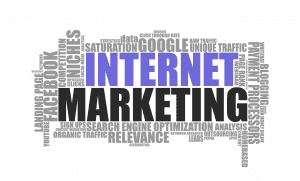3 Ways To Market Your Business That Don’t Involve The Internet

1. Speak at conferences and panel discussions
Whether you’ve been invited to talk at a conference of some sort, or a panel discussion, it’s definitely in the interest of your business to take up this opportunity. Not only does this give you a platform to talk to people that you may not have otherwise had the opportunity to connect with, but it also gives you a brief window period to convince people that your business would be useful to their lives. Sometimes, there is no better way to sell yourself than being in front of the people that may be interested in your services, so make the most of these opportunities. You’ll also meet other people in your field!
2. Keep business cards on you
Business cards have existed for ages, but a lot of professionals are still ensuring that they’ve got a few on them at all times. This is one of the key ways of offline marketing, so make sure that you order some professional business cards from a company that offers a good printing service. If you meet somebody at an event, or even somewhere totally unexpected, it doesn’t really look great if you just write your email down on a scrap of paper, and the person in question will forget who you are pretty quickly. Get some printed, and take a few out with you wherever you go.
3. Advertise on local radio
OK, we know what you’re thinking. Local radio? Who even listens to the radio anymore? But think about how many people commute in the mornings and evenings, and a lot of them do listen to the local channels. In fact, more people listen to the radio in the US than those who watch TV. There are many benefits of local radio ads, but one of them is that it isn’t as expensive as national radio, and it specifically targets your community. Sure, it may cost you a little more to put an ad out during busy times, but when you see the benefits that you get from this, you’ll be glad that you tried this offline method of marketing.
So, if you’re looking to market your business without using the internet, there are a variety of ways that you can do so. Some of these options include speaking at conferences, keeping business cards on you, and advertising on your local radio station. Good luck, and happy offline marketing!

 In 2018, the US coffee shop market grew to over $45 billion, with over 36,600 stores across the country. While a lot of stores belong to chained brands, such as Starbucks and Dunkin’ Donuts, more and more independent shops are carving a spot to call their own in a competitive market. Indeed, more and more coffee enthusiasts are looking for a unique experience with their favorite brew. There’s plenty of room for independent business owners to tap into the interests of an educated and savvy audience. But at the same time, it’s essential to provide the same level of service than your customer would get in a branded chain.
In 2018, the US coffee shop market grew to over $45 billion, with over 36,600 stores across the country. While a lot of stores belong to chained brands, such as Starbucks and Dunkin’ Donuts, more and more independent shops are carving a spot to call their own in a competitive market. Indeed, more and more coffee enthusiasts are looking for a unique experience with their favorite brew. There’s plenty of room for independent business owners to tap into the interests of an educated and savvy audience. But at the same time, it’s essential to provide the same level of service than your customer would get in a branded chain. Each of the
Each of the 
